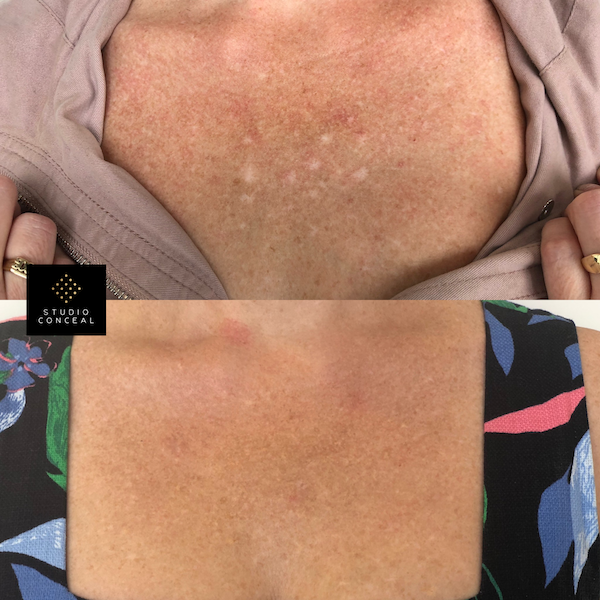Do you have a scar on your face, chest, or body that limits what you want to wear? As you researched online for solutions, one option that may have come up is scar revision done by surgery.
Read on to find out more about scar revision and its procedures as well as available alternatives.
What is scar revision surgery?
Scar revision is a type of reconstructive surgery that attempts to minimize the presence of a scar on the body using different approaches. The bottom line is it makes the scar less noticeable as well as makes it blend in with the surrounding skin tone and texture.
The steps in a scar revision surgery include administering anesthesia and application of the treatment. It also includes the use of other known techniques such as topical treatments, injectable treatments, and surface treatments.
There are cases when additional steps will be done. Sometimes deeper scars may need an incision to be able to surgically remove the old scar.
WHAT ARE THE DIFFERENT TYPES OF SCAR REVISION SURGERY?
Different types of skin revision surgery may be done either alone or in a combination to achieve better results. Discussed below are some of its types:
1. Skin flaps – it is a healthy tissue or skin that is partly detached then moved to cover damaged skin or a nearby wound. It may contain skin and fat, or skin, fat, and muscle wherein the skin flap is still attached to its original site at one end and remains connected to a blood vessel.
2. Skin grafts – healthy skin is removed from one area of the body to repair damaged or missing skin somewhere else in the body. In this case, the skin does not have its source of blood flow and is used to help more serious, larger, and deeper wounds heal.
3. Tissue expansion – helps the body grow additional skin that can cover a scar. The skin is gradually stretched by placing an inflatable balloon under the skin near the scar site. Extra skin tissues may be used for this procedure.
4. Z-plasty – a known procedure commonly used to revise more serious scars. A cut is made along either side of the scar to create angled flaps that reposition the direction of the scar. This interrupts scar tension and makes the scar less visible.
IS SCAR REVISION SURGERY FOR EVERYONE?
An issue with scar revision surgery is that surgery in itself causes inflammation. Thus, this may mean recurrence of scars especially for keloid formers.
Another consideration would depend on the personal preference and current financial status of an individual. When considering scar revision surgery, the cost is always at the forefront of any elective surgery.
An experienced board-certified plastic surgeon is advisable to ensure the quality of the surgery. The more qualified and experienced the plastic surgeon is, the higher the required professional fee for the procedure.
In addition to the surgeon’s fee, other factors that will contribute to the cost of the surgery include hospital or surgical facility expenses, and anesthesia fees. The prescriptions for medications, post-surgery garments, as well as additional medical tests will also add to the total cost.
ARE THERE ANY COST-EFFECTIVE OPTIONS FOR SCAR REVISION SURGERY?
If you prefer not to go under the knife, a non-surgical, minimally invasive, and budget-friendly scar revision treatment is now readily available. A scar tattoo basically camouflages scars and is an alternative scar revision technique that does not require undergoing the surgical process.
Scar Tattoos: A Non-Invasive Option
HOW DOES A SCAR TATTOO WORK?
Scar tattoos differ from the traditional ornamental tattoos because they serve a primary purpose. In this case, they are mainly used as camouflage for scars and even stretch marks on the body.
In technical terms, a scar tattoo is a non-invasive tattooing method. It primarily uses skin-toned ink pigments in the entire process. This is mainly done to conceal and disguise the appearance of scars by filling areas around it that are missing color. You can check one of my latest scar tattoo procedures.

WHAT ARE THE ADVANTAGES OF SCAR TATTOOS OVER SCAR REVISION SURGERY?
Aside from the fact that scar tattoos are non-invasive in nature, this form of treatment is a permanent cosmetic service. It is also known to require little to no downtime.
Since it is not a form of surgery, there is no need for those expensive surgeon’s fees and payments for anesthesia.
Also, there are scars, such as my latest scar revision tattoo, where surgery may be less suitable since the scar came from something more minor and small in size such as chickenpox.
Most Frequently Asked Questions About Scar Tattoos
For those who have only recently learned about scar tattoos, you might be a little apprehensive. Here are some frequently asked questions to enlighten you about the process.
IS IT SUITABLE FOR ALL SKIN TYPES?
Generally speaking, this treatment is good for all skin types as long as they meet the minimum requirements. This means the scars need to be two years old or more, totally healed and lighter than your current skin tone.
DOES THE ENTIRE PROCESS HURT?
As it is a penetrative skin procedure, one will surely experience a small amount of discomfort. The pain, however, is manageable as there is no need for anesthesia during the procedure.
HOW LONG DOES THE TATTOO LAST?
On average, the effect of the tattoo will last for 5 years or more, so long as one strictly follows the prescribed after-care protocols. Immense sun exposure can break down the ink particles and colors over time. It’s advised to wear 50+ SPF once your scar tattoo is healed to keep the integrity of the color intact.
Book a Free Consultation Today
If you want to know if scar tattoos are for you, book a free online consultation today.
